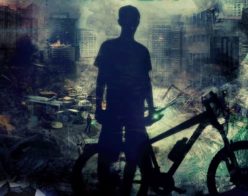On our 6th day of CERT class, we reviewed fire safety and learned how to effectively use a fire extinguisher to put out a real fire.
Let’s review what everyone knows: Fire is really, really dangerous. Not only it is hot, which hurts, it also makes smoke, which is often full of all kinds of other terrible things that can kill you other ways.
We covered a few basics, e.g., use the buddy sytem when fighting a fire, CERT teams should only be fighting small fires, make sure you wear a mask, leather gloves, your green CERT hard-hat (or whatever hard-hat you have handy), etc. Then we spent a fair amount of time reviewing basics, e.g., fire requires heat, oxygen, and fuel. While that may seem boring and basic for a third grade science class, there is one interesting aspect to one part of that triad. The type of *fuel* makes a difference when it comes to how you want to put it out. Your fire extinguisher should be rated for putting out a fire that’s buring a certain type of fuel.
The fuels determine the class of fire:
- Class A: Ordinary combustibles – paper, cloth, wood, rubber, plastics
- Class B: Flammable liquids, e.g., gasoline
- Class C: Energized electrical equipment
- Class D: Combustible metal (e.g., aluminum, magnesium) Metals burn? A common survival fire-starter is a block of magnesium! You scrape off shavings add a spark, and they burn hot.
- Class K: Cooking oil, e.g., vegetable oil, fats
The fuel matters. If you have a class C fire, spraying water on it could actually kill you, or create dangerous, energized puddles, waiting to electrocute whoever steps in them!
One of the biggest causes of fires after an earthquake is a natural gas leak. After an earthquake, shut off your gas, unless you’re absolutely sure you don’t have a leak. One way to tell you have a leak is you see the gas meter dials moving when you aren’t using any gas.
Let’s say you have a fire in progress. Do you try to put it out? Here are some questions you need answers to:
- Do I and my buddy (buddy system!) have the right equipment? (Especially the right type of fire extinguisher.)
- Are there any other hazards? (Your safety is Priority 1!)
- Is the building structurally damaged?
- Can I and my buddy escape?
- Can we fight the fire safely?
We reviewed types of fire extinguishers and how to use them. They fall into these categories: water, dry chemical, carbon dioxide, and other specialized types. In addition to being rated by the type of fuel on which they should be used, some have another number to indicate the volume of extinguishing agent.

- We go to use them! The nice part is that we knew what the fuel was (liquid) and had a bunch of fire extinguishers ready. We practiced using the buddy system, had on our safety gear, and used the PASS system, Pull (the pin), Aim, Squeeze, Sweep. The only parts that may not be intuitive are #1 – pulling that pin in the first place. Sometimes people forget to do that in the stress of being near open flame. The other part is the “sweep” part. You will need to aim at the base of the fire (not necessarily the biggest part of the flames, which is where you may intuitively want to aim) and move the fire extinguisher back and forth along the base of the fire, to ensure you covering it fully.
We continued to put out fires, until everyone got a chance to put out at least one. The picture gives you some of an idea of what it looked like. It was dark and a bit rainy, but the flames were big and we were able to put them out. It was fun, and a new experience for most of us.
Reading this is not the same as taking a CERT course and fighting a real fire with a real fire extinguisher.
Go take a CERT course! 🙂
